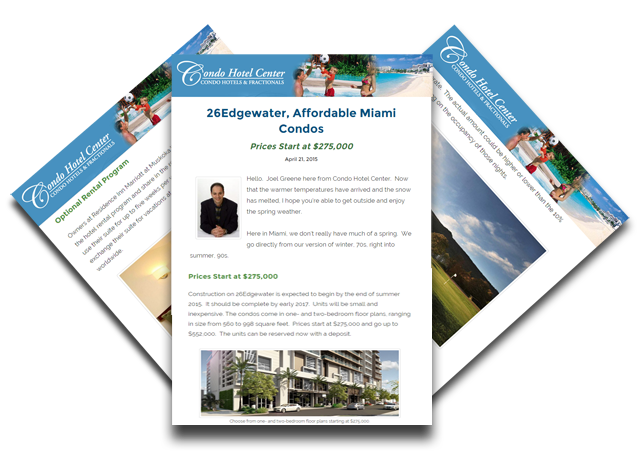By Peter Yesawich
Resort real-estate is the current rage for affluent consumers, even more so than the “next” destination to be discovered. The reason is obvious: Property values in some of the most popular resort destinations have escalated dramatically in recent years, oftentimes at higher rates than those observed in the hottest residential markets.
The long-term forecast for continued growth remains robust, driven by a finite supply of product (there’s only so much beachfront or mountainside property left), attractive interest rates and what will soon be the greatest generational transfer of wealth ever to occur in American history. The result? Continued escalation of resort real-estate prices for those who want to buy and, presumably, those who elect to spend just a few nights.
Perhaps one of the best indicators of the long-term forecast for resort real-estate is the remarkably high incidence of the utilization of condominium resorts by affluent travelers: 39 percent during the past two years (as identified in the Yesawich, Pepperdine, Brown & Russell “2004 Portrait of Affluent Travelers,” which are defined as those with an annual household income in excess of $150,000).
Even more compelling is the fact that 47 percent of affluent travelers expect to stay in a condominium resort or condo hotel as an alternative to conventional lodging during the next two years. This will obviously translate into significant exposure for resort real-estate products, regardless of their form.
One of the most interesting consequences of the rapid climb in resort real-estate prices is the remarkable transformation of the manner in which the “product” is assembled, sold and used. Twenty years ago, the preferred acquisition was either a vacation home or condominium, for which the owner received a deed and, more often than not, was the sole user.
The rapid rise in the price of resort real-estate then combined with the disconcerting realization by many owners that they simply wouldn’t have more than a few weeks a year to enjoy their hideaway, and the result was the emergence of other forms of ownership that provided greater flexibility of use without the requirement or cost of whole ownership.
Timesharing entered the scene in the late 1960s (then morphed into “vacation ownership”), followed by other forms of fractional ownership in which the year was divided into multiple periods of several weeks of usage. During the mid-1990s, we observed the arrival of private residence clubs, followed by the most recent entrant: destination clubs.
Each of these “new products” represents an innovative way for consumers to “own” resort real-estate and/or have access to the corresponding benefits without the burden of paying stratospheric prices to own a resort residence that might sit empty most of the time.
These alternative forms of ownership also minimize the hassles associated with maintenance. And several provide “exchange” opportunities so the “owners” or “members” can experience multiple destinations as one of the benefits of their ownership.
Not surprisingly, the new product line appears to have evolved much faster than consumers’ awareness of the alternatives. Specifically, according to our affluent travelers survey:
- Almost all (97 percent) of affluent travelers are familiar with the concept of timesharing. One out of five (18 percent) currently own a timeshare, and an additional 4 percent are interested in purchasing a timeshare.
- Six out of 10 (60 percent) affluent travelers are familiar with the concept of vacation ownership. One out of 10 acknowledges ownership of vacation time, and an additional 5 percent are interested in acquiring vacation time.
- Less than half (46 percent) of all affluent travelers are familiar with the concept of private residence clubs. Only one out of 20 (5 percent) acknowledges membership in one or more of these clubs, and 4 percent are interested in acquiring future memberships.
- Less than half (40 percent) of all affluent travelers are familiar with the concept of fractional ownership. Among them, 6 percent acknowledge ownership of one or more fractionals, but only 1 percent express interest in future ownership.
So which form of resort real-estate ownership enjoys the highest awareness and measured interest among affluent consumers? Perhaps not surprisingly, the old-fashioned kind: whole ownership.
Specifically, 20 percent of affluent travelers acknowledge ownership of a vacation home, condominium or condo hotel unit, and 10 percent express interest in a future acquisition. Perhaps their interest is driven by the dream of even greater appreciation in the years ahead.
Peter Yesawich is president and c.e.o. of Yesawich, Pepperdine, Brown & Russell. The firm is America’s leading marketing, advertising and public relations agency serving travel, leisure and lifestyle clients. For more information visit www.ypbr.com.
 (954) 450-1929
(954) 450-1929 
